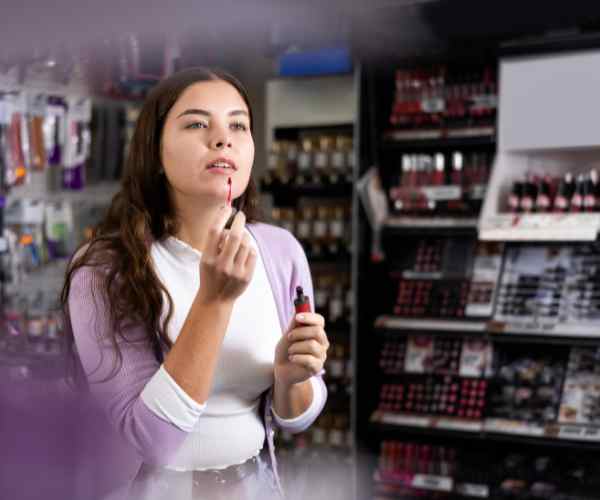In my fledgling career as a freelance writer, I would often brush off accessibility discussions as mere legal necessities, branded by the laughable ADA: Americans with Disabilities Act. For instance, while loaning a facility or attending a meeting, onlookers would rush to comply with the law and do only the barest of necessities to ‘check the box.’ However, in the modern age of 2024, there is now an intersection of accessibility and the transcending notion of digital inclusion.
Things are not as simple as trying to tick boxes anymore – it is rather about providing YOUR audience, no matter their differences and abilities, the ability to view, browse, and interact with your content. Essentially everything stands at stake, from the structure of your website to everything in between. Likewise, what if someone sought to visit your site but the content on it was illegible due to poor coloration or someone was incapable of finding their way around due to jumbled layouts? It’s not simply irrititating, rather, it borders exclusionary.
The hi-tech designs are for Amina. Recently I spoke with a friend who suffers from visual impairment and she shared with me how she is finding more and more websites that are actually accessible for her. She loves how more companies are incorporating how things like larger font options and high-contrast modes are more common than ever before. For her, it is not just about usability – it is about being valued and taken into consideration alongside in the design process.
So in 2024, how do you begin designing for accessibility? Regardless of creating a new product or trying to sift through an aged one, there are essential rules that you must adhere to. In this article, I’ll guide you through the steps to take ensuring your designs are not just thought about inclusively but are interesting as well as efficient. Let’s dig right into how to go about designing creations that can be used by all people so nobody is left out!

Practical Steps for Designing with Accessibility in Mind
Color Contrast and Readability
In designing, consider if the color contrast and the readability are essential or not. Well, always deem them as non negotiables.
I still remember how hard it was to read the very first site with pastel text on a pastel background. I am a designer and one would assume the aesthetics would prove to be sufficient to quell the squinting and head aching, however, it proved to be the contrary. For some people, like me, form is not the only thing to be focused on, in fact, form should not once overpower function. This especially applies to users with sight impairments.
Having a high contrast where the text visibly pops out from the background is essential. Not only do they aid a user with Constructs themselves to be alright for all users. So how do you go about making sure that your color schemes are not restricting of any kind? Contrast checkers are a very simple and effective tool to rely on. It allows you to see if the colors would fit well together in the first place or not. For example, once I was working on a project and used a contrast checker and found a combination of colors I believed would suit it paranoid, impractical and unreasonable , however it proved otherwise proving the combination very practical. It was once I changed the colors for that I found it satisfactory and pleasing!
It is almost deplorable not to optimize your screen for screen readers.
Consider it this way: when your design does not work with screen readers, you restrict access for a large part of your audience. About a few years back, I had a good friend who was blind and used a screen reader to go around the web. She would talk about it quite a lot and I understood the need for designers to think about how their work would appear on the screen reader to the user.
In order to optimize your site or application for these tools, work on your alt-text descriptions on images, and use proper HTML markup. Alt-text is your chance to comment on what an image is about; do not miss the chance! Do not write just “image” or “photograph”; be somewhat more elaborate. For instance, if you have a picture of a sunset on a beach: “A sunset with a warm orange and soft pink backdrop over a calm beach.” This enhances the experience for the user.
Accessible Typography: The Font Game
Now on to typographic issues- this can be an element of accessibility or a hindrance.
Seeing the impact font selections can have for people is astonishing. A dyslexic person or someone with low vision can have some of their issues mitigated with the assistance of the right font. There is this recollection I have from a workshop I was at where we were asked to implement different sizes, styles and even spaces in different fonts. I never imagined something as simple as a font could transform how easy or difficult it would be to go through content.
Font types need to be selected carefully. Try leaning more towards sans-serif which is more appealing to the majority of users due to their higher readability. But don’t forget to accommodate font size, for body texts a size of 16 pixels or more is typically recommended. Something like this allows us to care for users with specific visual needs. I like to think of it as making sure the entire guestlist is able to attend so everyone can have fun at the event.
Tools and Resources for Accessible Design in 2024
Accessible designs do not have to be difficult to implement at all.Making use of the proper tools further simplifies the process.
The Best Tools To Test Accessibility Level on Website
One can agree that optimizing websites for accessibility is not for the faint-hearted! However, achieving this goal is possible.
Throughout my career, there have been several tools to aid with the elbow grease that this appears to be. Tools such as WAVE and Axe are also automated tools that easily detect accessibility errors. Issues such as alt-text not being present and contrast color issues are flagged as well. But it is important to remember that no tool works flawlessly. I have observed, however, that automated tools combined with manual inspections offer superior outcomes.
We recently conducted a project in which we tested software on a wider array of audiences, including disabled adults. There are some use cases that simply can’t be conducted with just software. It is a revelation and it is precisely why ordinary people must be part of the experiment.
Accessibility Resources That Are Of No Cost To The Users
In case you want more resources on what accessibility design is all about, there are a number of resources available at no cost.
Understanding the concept of accessibility has been simplified by online courses and webinars which I have attended in the past. There is a lot of useful content on websites such as Web Accessibility Initiative (WAI) and various free courses are also offered by organizations. There was a series of webinars that I attended which not only deepened my understanding on various concepts, but also enabled me to meet fellow designers who focused mainly on accessibility.
Make sure to look through community forums and blogs in which designers post about their lessons and suggestions. Interacting with other designers in the same domain could help motivate you and provide real world examples you can use. It’s all about helping each other and forming a network as such.
Frequently Asked Questions:
What is the difference between previous versions and the WCAG 2.2 version of the WCAG?
For the last update of the Web Content Accessibility Guidelines, version 2.2 was released. The aim of the guidelines is to enable making web content accessible to all users including the disabled users.
I vaguely recollect that the first time I came across WCAG, I found the information relevant to crafting an inclusive cyberspace highly captivating, it was equivalent to discovering a new piece of treasure. This version improves upon previously existing standards, however, the new criteria, which emphasize the need for content that is more mobile and dynamic, are what give this version a competitive advantage.
For instance, one of the exciting additions in WCAG 2.2 is the introduction of a guideline related to the content on mobile devices — which is self explanatory that mobile devices are indispensable for almost everything. This is to ensure that as the culture of technology advances, everyone would still be able to experience and use digital access without any difficulties.
What are key accessibility elements in my Design?
In terms of the accessibility elements, I have often been able to come up with the best features possible, that would help me in best user experience.
First and foremost, color contrast is essential. I once worked at a project that had a selection of palettes with pastel colors which were highly appealing, but the catching and eye-opening fact was that the majority of readers found it absolutely impossible to read. Therefore, It is recommended to never forget that there should always sufficient contrast between text and background colors to readability.
To proceed, let’s talk about the alt text images. This function makes it possible for blind users to grasp what a photo contains. I recall one such webpage which I often used to visit where the graphics were stunning, however as there was no alt-text disclaimer, some users were oblivious to the visuals.
And screen readers – don’t forget about them! Making your website usable with such devices is crucial. One last point is about the questions of comfortable structure. A properly designed and user-friendly interface is beneficial for all, including those who require additional aid.
Conclusion
If your design is focused on accessibility in 2025, it is not going to be a passive activity. It would mean creating an all round usability for everyone.
I normally associate accessibility with a journey and not the other way round. For instance, every time I integrate accessibility features into my designs, it feels rewarding because I understand that I am making an impact. Always remember, your business strategy won’t be influenced by diligently following guidelines, but rather providing a better environment for users to engage and creating a profit instead.
Embrace this new outlook and view accessibility as an ongoing process rather than a project that has clear boundaries. Do it now and your designs would be in line for the future where every individual that uses the digital platform can avail and enjoy it to their heart’s content.






